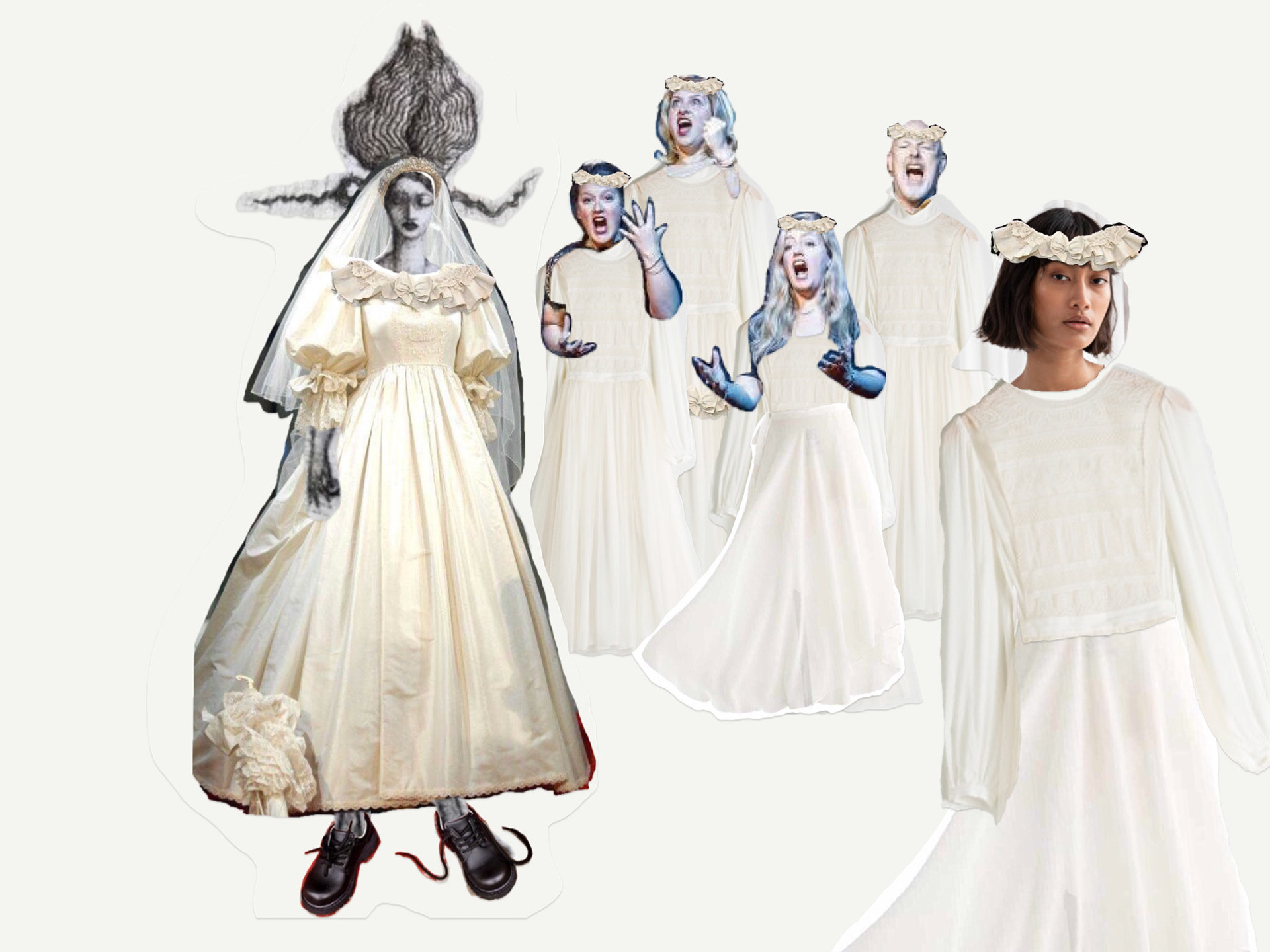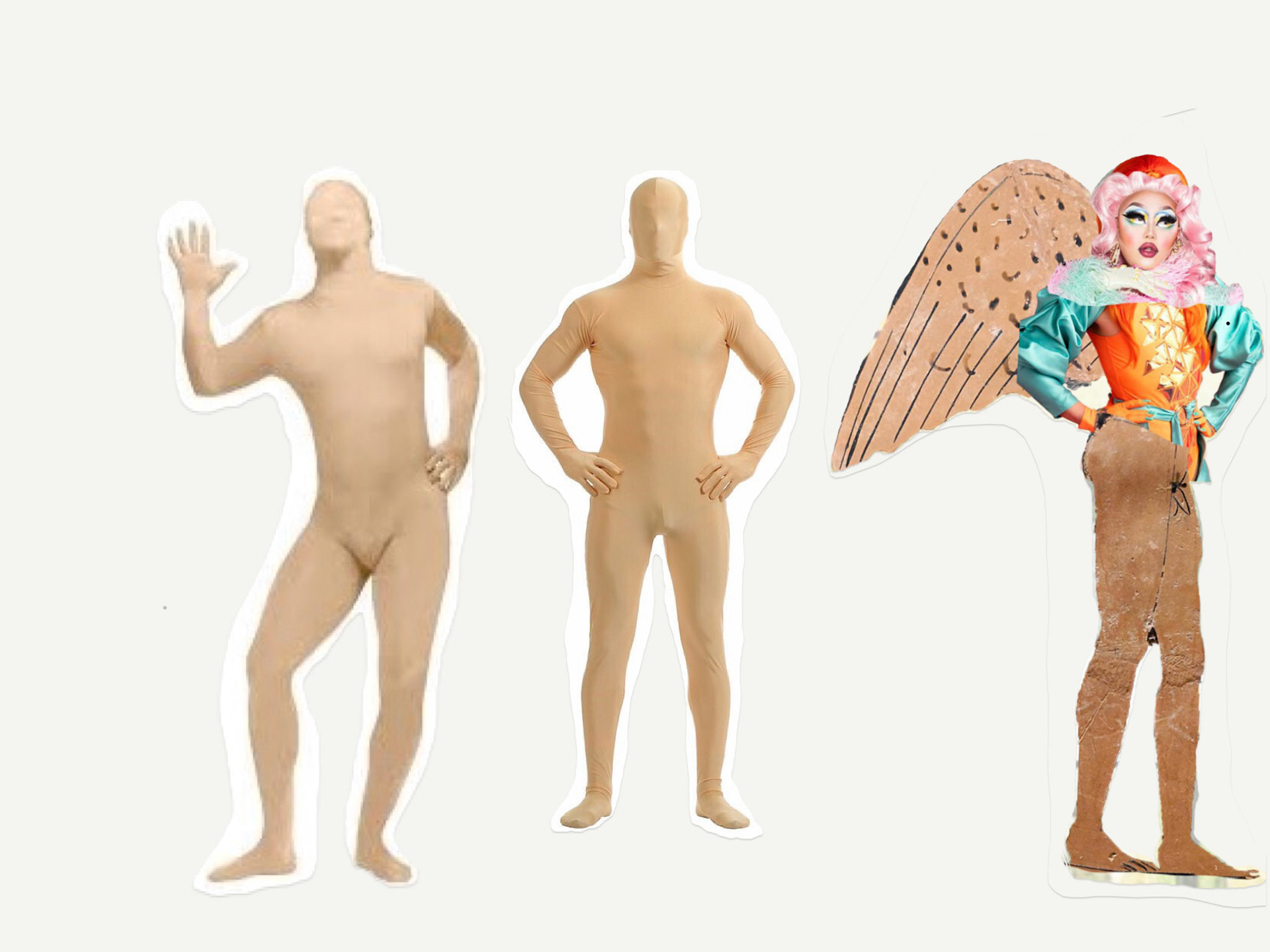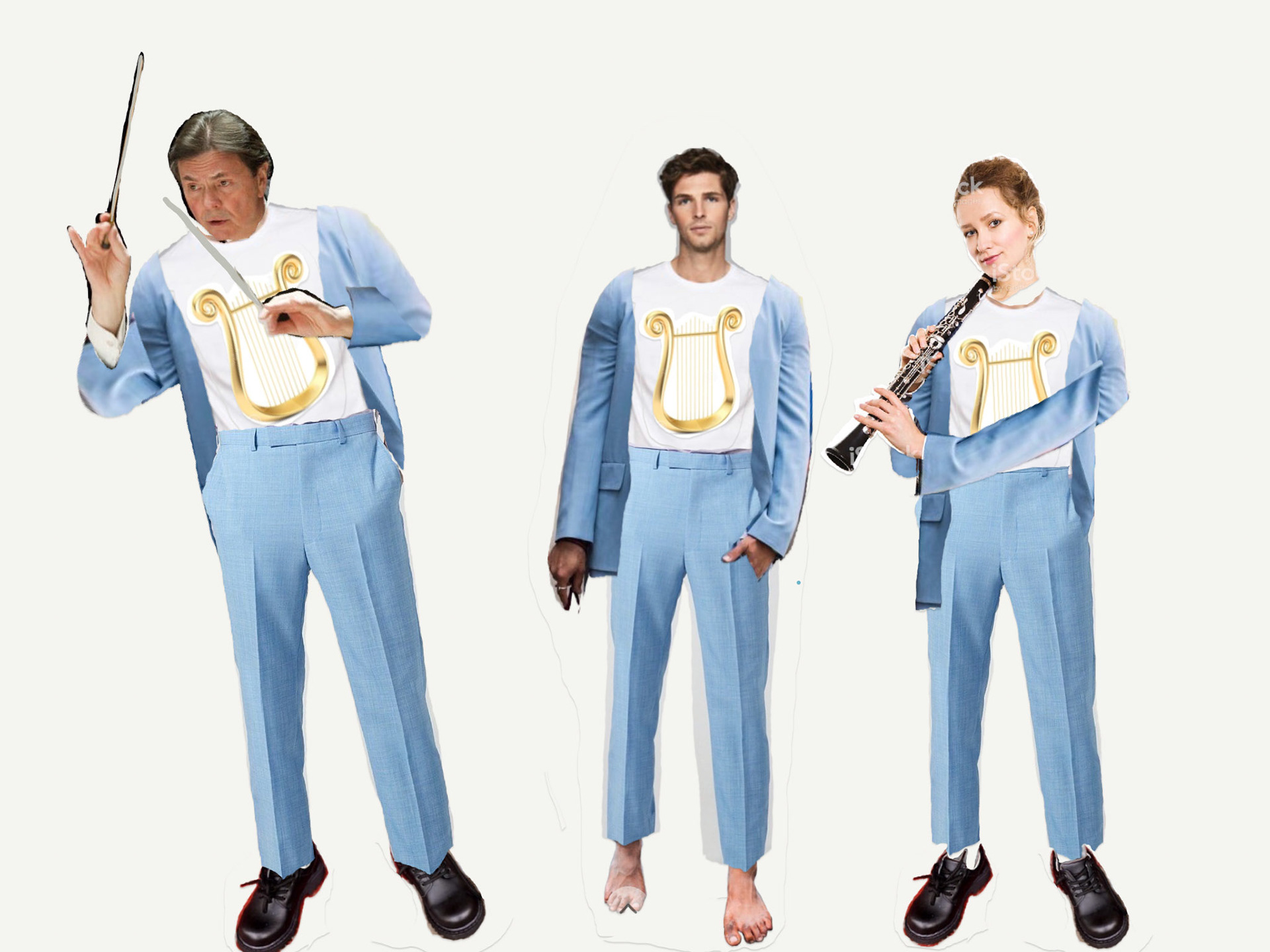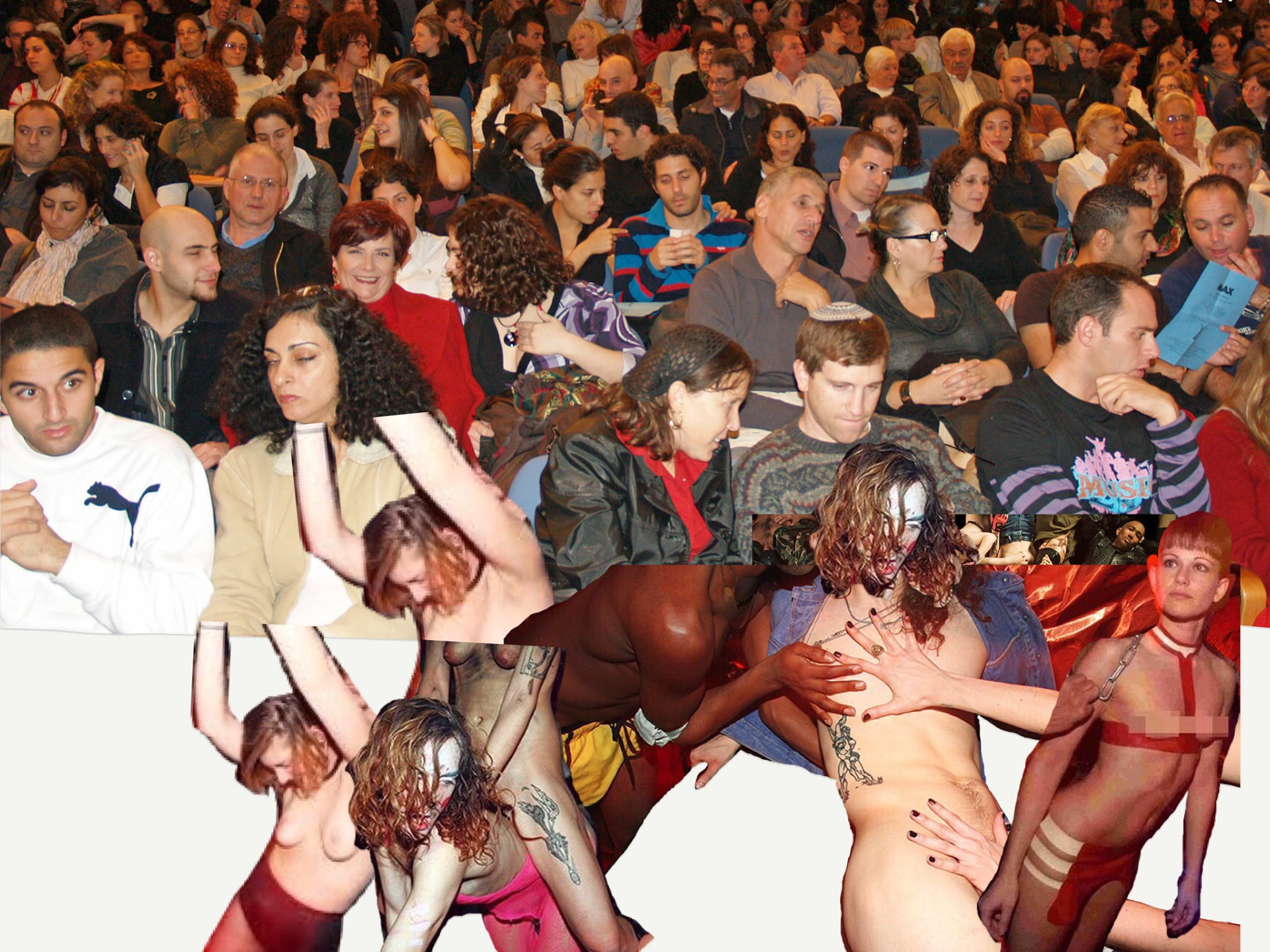Opera design and direction for Gluck's Orpheus ed Eurydice. I decided to reverse the roles of Eurydice and Orpheus so that I could design for the transformative journey of a female protagonist. The myth’s climatic mistake, the ‘fatal gaze’, is framed as an entry into a new phase of realisation, which, for Eurydice, would be a moment to disassociate or "free" herself from the original score.
The orchestra is positioned on stage, centring Gluck’s 18th century music, only for Eurydice to dismantle it at the end. The opera ends with Eurydice singing without any instrumental accompaniment. Additionally, the audience is regarded as the underworld, representing all things that come with being human: sin, love, lust, joy, hate, etc. Eurydice thus travels into the auditorium to retrieve Orpheus. With this, Eurydice’s fatal gaze is towards Orpheus and the audience. This confrontation challenges opera audience’s complicity in repeating (hi)stories and sees Eurydice acknowledge her present reality: stuck in front of a sea of eyes judging her every move.

Eurydice and the Chorus represent the Voice.

Amore is a mischievous, eccentric cupid Drag Queen who has the power to resurrect the dead (if she wants to). She is the director, with help from her stagehands.

Orpheus and the orchestra represent the Music and its composer.

The Furies guard the entrance to the underworld. The audience is the underworld, representing all things that come with being human - sin, love, lust, joy, hate, etc.
Eurydice ed Orpheo